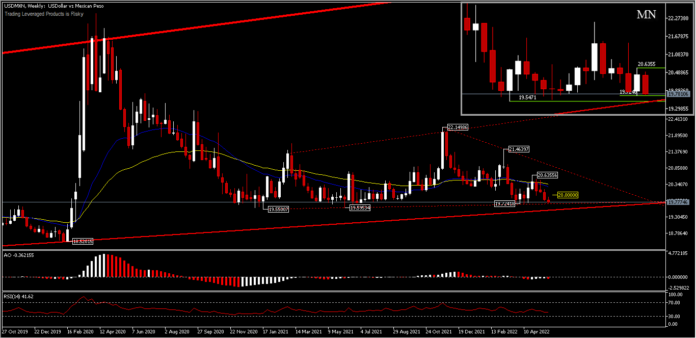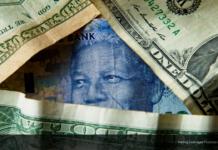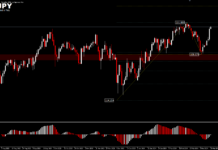Banxico raised its benchmark interest rate by 50 bps to 7% on May 12, amid concerns about rising inflation risks from geopolitical conflicts and expectations of faster global monetary policy tightening. It was the 8th straight increase, bringing borrowing costs to their highest level since February 2020. The annual inflation rate in Mexico rose to 7.68% in April 2022 from 7.45% in March. This is the highest figure since January 2001, as goods prices rose rapidly. The core inflation rate increased to 7.22% from 6.78% in the previous month. On a monthly basis, consumer prices rose 0.54% from 0.99% the previous month, slightly below expectations of 0.58%.
Meanwhile, Mexico’s 22Q1 GDP, reported this week, increased by 1.8% y/y from 1.1% in the previous period, above the initial estimate of 1.6%. On a quarterly basis, Mexico’s economy was up 1.0% q/q following a flat reading in the previous quarter. The manufacturing and services sectors increased by 1.2% and 1.3%, respectively, while the primary sector contracted by 2.0%.
The market is moving on the risk appetite side, after the FED minutes confirmed that they see no urgency for a 75bp hike and that two 50bp gains are on the map for the next two meetings, depending on the data coming out. The market looked quite calm after the minutes which was accompanied by a correction in yields and a slowly retreating USD. The US PCE price index increased 7% quarterly in the first three months of 2022, the most since 1981 and in line with previous estimates. This illustrates that inflation has not been able to enter the process to the downside.
Technical Overview
The USDMXN currency pair continued the previous 3 weeks’ decline this week with the total decline for the month of May already reaching 3%. The pair still looks depressed with the price currently still below the 26-week EMA26 and 52-week EMA. However, the declines look limited and traders are likely to be cautious, as the price moves closer to the monthly structural support at 19.72 and the yearly 19.50.

USDMXN, H4
The intraday bias still looks likely to zigzag to the downside, but the recent candlesticks signal indecision. This informs that the market is waiting for a catalyst that will take it in the real direction. On the downside the immediate support is seen at 19.72, and if this level holds then there is a possibility of a short term rebound towards the psychological 20.00 level. The divergence bias is seen in the 3 oscillation indicators, which represent the saturation of the intraday market. A break of the support level will bring the asset to annual support. Broadly, the bears’ dominance will diminish, if the price is able to move above the 20.00 psychological mark. Otherwise, the consolidation trading will continue and the prospects will be blurred.
Click here to access our Economic Calendar
Ady Phangestu
Market Analyst – HF Educational Office – Indonesia
Disclaimer: This material is provided as a general marketing communication for information purposes only and does not constitute an independent investment research. Nothing in this communication contains, or should be considered as containing, an investment advice or an investment recommendation or a solicitation for the purpose of buying or selling of any financial instrument. All information provided is gathered from reputable sources and any information containing an indication of past performance is not a guarantee or reliable indicator of future performance. Users acknowledge that any investment in Leveraged Products is characterized by a certain degree of uncertainty and that any investment of this nature involves a high level of risk for which the users are solely responsible and liable. We assume no liability for any loss arising from any investment made based on the information provided in this communication. This communication must not be reproduced or further distribution.



















